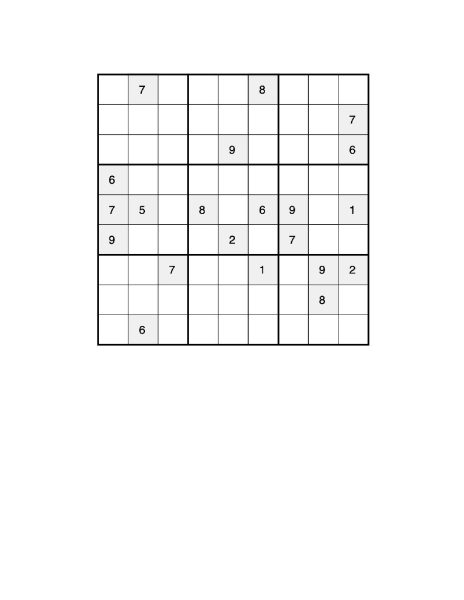A Four-Dimensional World
Some Words on “Flatlands”
There’s something that I’ve noticed time and time again. It’s pervasive across grades and schools—most people I know have seen a movie called “Flatland,” typically sometime in middle school. This phenomenon that may or may not apply to you specifically, the reader of this article—the apparent universality of watching “Flatland” in math class—is interesting to me for a very simple reason. There are two movies called “Flatland,” and everyone I know has seen the wrong one.
To sum it up: in 1884, there was a theologian and academic named Edwin Abbott Abbott. At the time, the concept/mathematical theory of a fourth spatial dimension was controversial. Its critics argued that it was preposterous to speculate the existence of a fourth dimension because, obviously, we live in a three-dimensional world.
Edwin Abbott Abbott decided to write a counterargument in the form of a novella called “Flatland,” where a talking, thinking square named A Square—a resident of a universe with Victorian societal conventions and only two dimensions—is ridiculed by his fellow Flatlanders for telling his tale of an encounter with the third dimension, because, obviously, they live in a two-dimensional world.
The book wasn’t a huge hit at the time, but in the 20th century it was rediscovered and hailed as a hallmark of mathematically inspired literature. It inspired multiple copycat books, spiritual successors, and unofficial sequels, as well as that one poster in Mr. Riff’s classroom. In 2007, two movies about “Flatland” were made and released within months of one another.
The first, technically known as “Flatland: the Movie,” was created and marketed by two independent filmmakers. It featured a cast of actors that straddle the line between B- and A-list, including Kristen Bell and Tony Hale (Forky from Toy Story 4), and it received rave reviews from the sort of publications that math teachers read and prestigious awards from film festivals that neither of us have ever heard of. It’s 34 minutes of grade-A, non-GMO edutainment; you know exactly what it’s like even if you’ve never seen it before. It’s a kid’s movie with math in it.
Visually speaking, it’s a very pretty movie; although it’s not quite true to the idea of a real two-dimensional universe, it’s still fun to look around and see all the little details in store. You can see inside Arthur Square’s closed refrigerator just like any three-dimensional observer would be able to do. It is, by any standard, a successful movie—it aims to teach middle schoolers about the fourth dimension, and it does that. Presumably, the producers and actors wanted to make money, and they did that as well. Although no specific figures have been released, it was atypically profitable for such a niche project.
The other Flatland is much stranger.
“Flatland: The Film” stars Ladd Ehlinger Jr. in a screenplay written, produced, animated and directed by Ladd Ehlinger Jr. Ehlinger is apparently a smalltime conservative radio show host who sometimes dabbles in independent filmmaking (and wildly controversial, arguably bigoted campaign advertisements for conservative politicians). “Flatland: The Film,” his first cinematic project, was animated entirely using off-the-shelf animation software. It shows. “Flatland: the Film,” although detailed and intricate in a way that “Flatland: the Movie” is not (you can see the inner workings of radios! You can see inside A Square’s stomach!), is visually kind of a mess. The animation is jerky and blunt; the backgrounds are stagnant and bland. The 3D section of the movie looks weird in a 90s kind of way, reminiscent of Pixar’s earliest short films. The plot, similarly, feels a little amateurish and incoherent.
Although it’s truer to the exact plot points of its namesake book than “Flatland: The Movie,” it’s tonally different—at times, it shares that kid-movie spirit with its counterpart, but at others it feels like a deadly-serious, cerebral sci-fi epic. Often, the musical cues directly contradict the events occurring; inconsequentialities are backed by grim ambiance or silence, and the movie’s darkest moments are paired with jaunty, almost Hawaiian music.
That’s the thing about Ehlinger—if artwork can function as a gateway into the mind of the artist, what can we discern about him? He’s the sort of person able to hold multiple contradictory opinions at the same time. He frequently says things simply for the point of saying and does things simply for the point of doing. Inciting controversy is practically a part of his job description. He feels passionate about everything and nothing. He cares more about abstract concepts than concrete things. To him, the most important thing in the world is individual freedom, no matter what you choose to do with it.
I cannot overstate how utterly, uncannily weird this movie is. This is a movie about literal polygons (and the occasional polyhedron), and there are four different, totally unrelated bloody massacres at three different points in the film. This is a movie about war: wars between countries in Flatland (the place) and wars between the 2D and 3D worlds. This is a movie with no real ending, where nonsensical credits roll as mariachi music plays. It’s like a dream and not in a good way— it’s the only movie I’ve ever seen that gets less comprehensible the more you rewatch it.
And it’s one of the best movies I’ve ever seen.
I can’t adequately explain why. Its weaknesses are many and its strengths are few and subjective. But “Flatland: The Film” is brave, brave and unique in a way that “Flatland: the Movie” never could be. It’s a unique, unreplicable experience because, unlike the vast majority of other movies out there, it wasn’t made for someone. It wasn’t made for children or teenagers or young adults or old adults. It wasn’t made for Republicans or Democrats or Beatles fans or cat lovers or men or women or couples or the erudite or people who love LEGOs. It wasn’t made for you. It was made for Ladd Ehlinger Jr., and although he is more than content to share, you must acknowledge that for 95 minutes you are playing on his turf.
And that’s why you should watch it.





